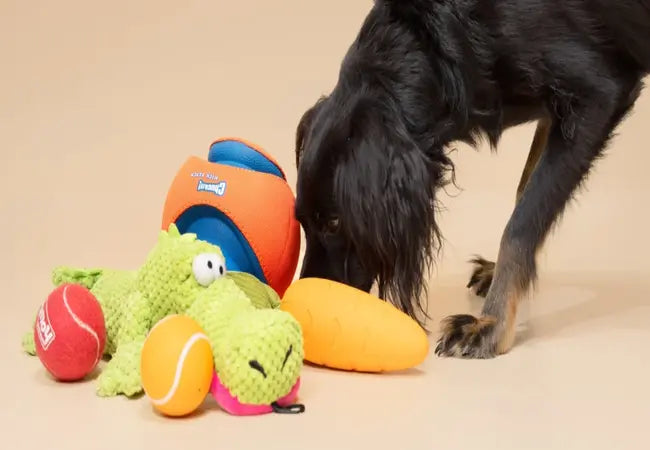In this article
Polydactyl (Extra‑Toed) Cats: Vet Guide 2025 🐾👣
By Dr. Duncan Houston BVSc
Have you ever noticed those “thumbs” on a cat’s paw and wondered what’s behind the extra toes? As a veterinarian, I’m here in 2025 to explain polydactyly—a largely harmless genetic trait giving cats extra toes. Let’s cover anatomy, genetics, advantages, special care, and when to call your vet. 🐱
1. What is Polydactyly?
Polydactyly is a genetic mutation where a cat is born with more than the usual 18 toes—typically 5 front, 4 back. These extra digits can occur on front or back paws, sometimes on all four limbs :contentReference[oaicite:3]{index=3}.
Variants include:
- Pre-axial (“thumb” or mitten paws) – extra toe near the dewclaw :contentReference[oaicite:4]{index=4}
- Post-/meso-axial – extra toes on the outer or middle paw areas :contentReference[oaicite:5]{index=5}
2. How it Happens: Genetics 🧬
The trait is autosomal dominant: one parent with the gene passes it on to ~50% of kittens :contentReference[oaicite:6]{index=6}. Mutations occur in regulators like the ZRS sequence near the SHH gene controlling limb development :contentReference[oaicite:7]{index=7}.
The famous “Hemingway cats” of Key West and many Maine Coons display this trait from one-line breeding :contentReference[oaicite:8]{index=8}.
3. Is It Harmful?
Most polydactyl cats are healthy and live normal lifespans (~12–15 years) with no extra health issues :contentReference[oaicite:9]{index=9}.
However, syndromic polydactyly, like radial hypoplasia (“twisty” squitten), includes limb deformities needing veterinary care and should never be bred into donkey genetics :contentReference[oaicite:10]{index=10}.
4. Benefits of Polydactyl Paws
- Improved balance—typical for climbing, walking, sailing cats on uneven decks :contentReference[oaicite:11]{index=11}.
- Better traction & hunting—extra toes help grip prey or toys :contentReference[oaicite:12]{index=12}.
- Wider snow-friendly paws—historically helpful for breeds like Maine Coons in deep snow :contentReference[oaicite:13]{index=13}.
5. Special Paw Care Tips
Extra digits mean extra responsibility:
- Nail trimming: Don’t miss the extra nails—overgrowth risks snagging, ingrowth, pain, infection :contentReference[oaicite:14]{index=14}.
- Paw hygiene: Clean between extra toes—litter and dirt can accumulate :contentReference[oaicite:15]{index=15}.
- Watch for deformities: Twisty toes, redness, swelling—these may indicate syndromic issues needing X-ray and possible toe removal :contentReference[oaicite:16]{index=16}.
- Amputation is rare: Only for problematic toes with structural defects :contentReference[oaicite:17]{index=17}.
6. Recognizing Syndromic Risks
Radial hypoplasia (RH) affects bone structure, causing abnormal gait or posture (“squitten”) :contentReference[oaicite:18]{index=18}. Cats with RH may need veterinary management and are discouraged for breeding :contentReference[oaicite:19]{index=19}.
7. Popular Polydactyl Breeds & Icons
- Maine Coon & Pixiebob: Traditionally polydactyl in breed shows; trait recognized in standards :contentReference[oaicite:20]{index=20}.
- American Polydactyl: A newer formal breed with defined personality/health traits :contentReference[oaicite:21]{index=21}.
- Hemingway’s descendants: ~50 cats at Key West home—famous polydactyl colony :contentReference[oaicite:22]{index=22}.
- Jake, 28‑toed cat: Guinness World Record holder :contentReference[oaicite:23]{index=23}.
8. Lifespan & Overall Health
These cats enjoy normal lifespans and health unless a specific digit causes lameness or infection. Regular vet checks are key :contentReference[oaicite:24]{index=24}.
9. When to See Your Vet
- 🩺 Limping, limber toes, licking paws excessively
- 🩺 Swelling, redness, discharge around extra digits
- 🩺 Abnormal gait or short legs suggesting syndromic forms
- 🩺 Difficulty trimming nails or ingrown claws
Your vet may perform physical exams, X‑rays, or toe amputation if needed :contentReference[oaicite:25]{index=25}.
10. Summary Table
| Feature | Polydactyl Cats |
|---|---|
| Genetics | Autosomal dominant mutation (ZRS/SHH) |
| Toe count | 6–9 per paw, often front legs |
| Health risks | Generally none; watch for RH syndrome |
| Benefits | Balance, grip, hunting ability |
| Paw care | Extra nail trimming, check hygiene |
| When to vet | Limping, swelling, deformity |
11. Final Thoughts
Polydactyl cats are charming anomalies: genetically unique yet typically healthy. Their mittens add character and function—but they come with extra paw care. A loving, attentive owner ensures these cats stay comfortable, playful, and balanced in 2025. 🐾
12. Call to Action
Curious about your cat’s extra toes? Share photos with Ask A Vet for expert review and trimming advice. Using nail caps or regular trims from Ask A Vet pros helps avoid ingrown nails. Enrich your polydactyl’s play with Woopf and Purrz toys that leverage their unique grip. Celebrate—and care for—the paws that make them extra special! 🎉






